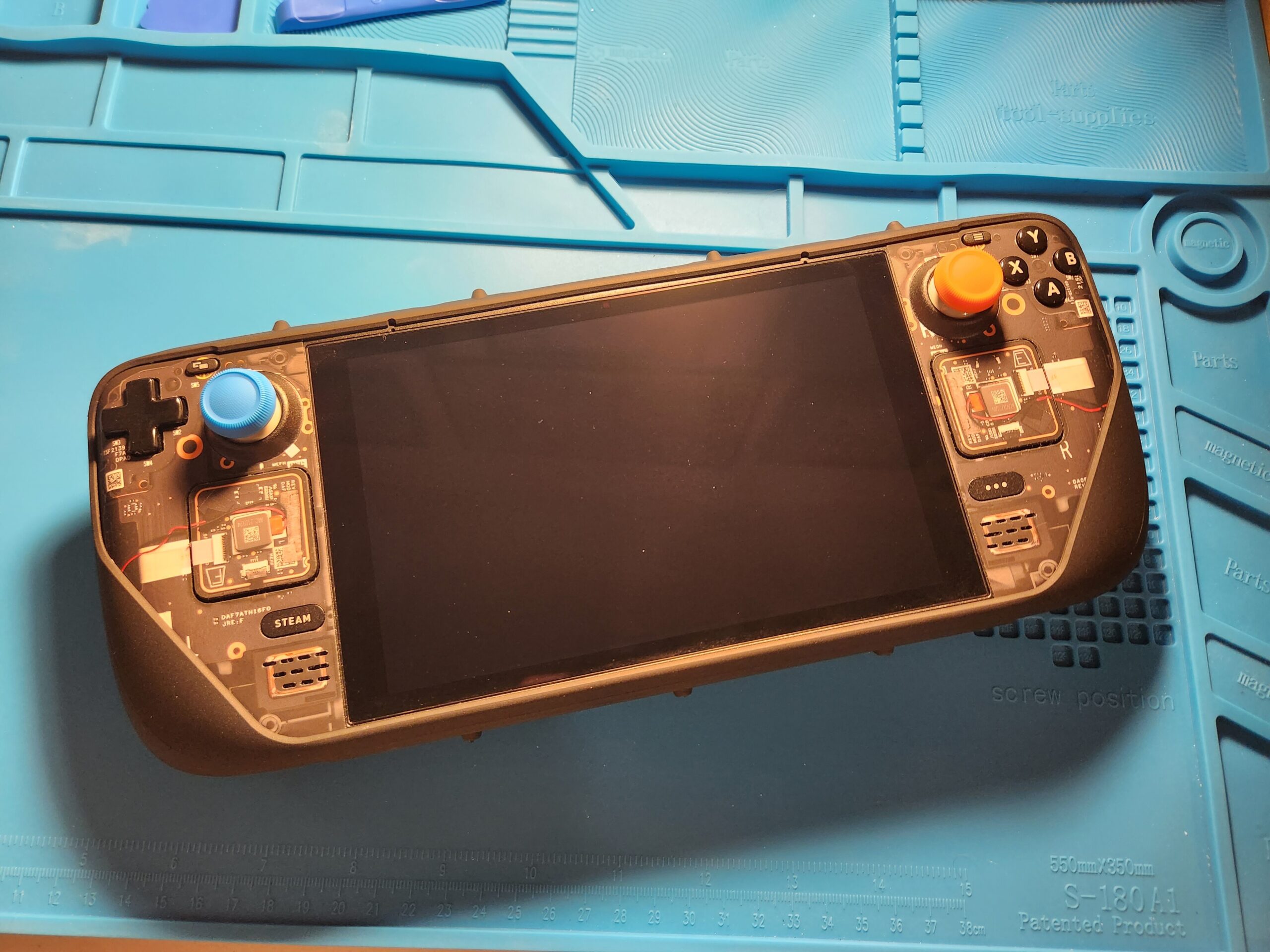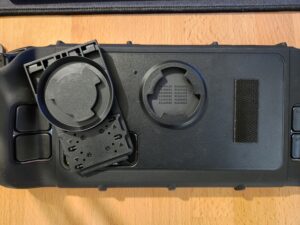dbrand Project Killswitch review
4 min read
A great case, delayed in the 11th hour.
The dbrand Project Killswitch is a case many had been anticipating, nearly since the announcement of the hardware that sits snugly inside it. Reservations placed, teasers teased, early reviews viewed… All to be swept away shortly before public availability, with the launch pushed back into the new year. One of its nicer features stirred some last-minute panic that caused dbrand to pull it from shelves before it even got put up. As we review this not-early-but-technically-early sample, we’ll touch on just what caused so much trouble.
The Killswitch comes in four parts: the case, the cover, the magnetic kickstand, and either one or two sets of thumbstick toppers. Everyone gets a set of toppers in black, but reservation holders also receive a second pair, in a bright blue and orange that those who’ve played Portal will instantly recognize.

The case itself is very similar to dbrand’s phone cases, providing a finely-textured, grippy finish where your hands rest, as well as a sturdy construction that you won’t fear dropping. Installation is straightforward, sliding in the bottom of the Steam Deck first, then pulling the top rubber across the triggers and bumpers.
The front cover is made of a hard plastic, and grips the case securely. Attaching the cover is performed similarly to the case, but in the opposite direction – using the trigger guards as a fulcrum, lever down the cover until the bottom latch snaps into place. A generously large flap is molded into the bottom, allowing easy removal. This combo is particularly useful for travel, reducing the Deck’s “packed” size substantially when compared to its included carrying case.


Along the back you’ll find cutouts for both the intake vent as well as the rear paddles. No complaints here. The magnetic kickstand attaches in the center, and can be positioned in any of the four cardinal directions – though you would be hard-pressed to find a use for any position other than what is shown here. This multi-positionability was likely to be used by the additional accessories dbrand planned to release later on.
And with the accessory mount, we come to the critical issue with this case. If you are like us and have a more recent Deck, you are most likely unaffected by this flaw, but there are many units that could, ironically, be damaged by this protective case.
The kickstand attaches to the case using magnets, as we’ve mentioned several times prior, which provides a secure connection while keeping removal simple. The magnets are housed in the removable kickstand, while the case itself merely holds a metal disk they interact with. Where is the problem? The issue lies with placement – the accessory mount is located right above the Steam Deck’s internal cooling fan. With some Decks, the magnets in the kickstand are strong enough that they interfere with the strength of the fan, forcing it to spin at a lower speed and provide significantly less cooling power. This has a serious impact on performance, and in some cases, could cause damage to internal components. The APU has over-temperature protections and will shut off if too hot, but other components may not have the same luxury. The charging IC, which controls power input, runs particularly hot even in the best of circumstances.
Why are only some units affected? For early batches of the Steam Deck, Valve sourced cooling fans from two suppliers – Delta and Huaying. Those familiar with the dual-sourcing situation may remember previous reports of the Delta fan being noisy compared to Huaying’s offering. Sadly, in the case of the Killswitch’s kickstand, it is once again the Delta fan with the problem. The Huaying fan seems to play nice with the kickstand attached, as dbrand has reported and as we have seen in our own testing.
This fan issue had apparently not come up during dbrand’s internal tests, as coincidentally all of their units had the better Huaying fan. It wasn’t until pre-launch samples were sent out that reports began coming in of fan speed reduction. The Verge noticed the fan behavior in its testing, which they immediately reported to dbrand. After sourcing a Delta-equipped Deck and confirming it themselves, dbrand issued a press release and halted sale just before public launch. While Valve has reportedly dropped the Delta fan from production moving forward (likely for other reasons), dbrand had decided to play it safe and redesign the attachment point to use a mechanical lock. The revised design will launch early 2023.

Where does that leave us with this review? Despite its major flaw, the dbrand Project Killswitch is a sturdy, otherwise well-thought-out case with ample protection for day-to-day use. Whether rear accessories attach magnetically or mechanically, the Killswitch gets a solid recommendation from us at Handheld PC.




